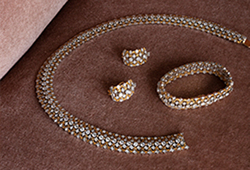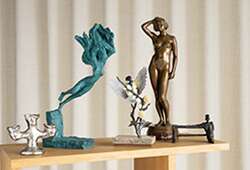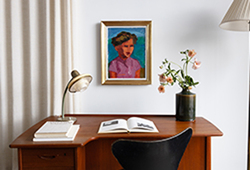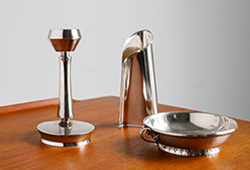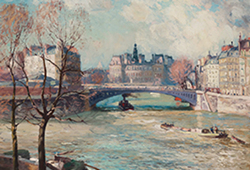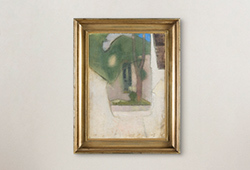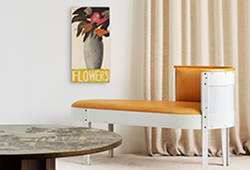Two Transitional blue and white pear shaped vases, 17th Century.
This heavily potted blue and white vase has a pear-shaped body leading to a tall slender and flared neck. One with a scene depicting scholars in a garden setting, is thought to be taken from the “ Literary Gathering in the Western Garden “ – painted with stylised tulips and Buddhistic emblems. There is a daisy pattern to the shoulder and a lappet decoration to the lower level of the body and above the foot rim. Height 21 cm. The other with a scene of a military officer baring a halberd – a spear-shaped weapon with a crescent blade to one side. There is a fortress to the rear of the landscape and a horse being equipped for battle in the foreground. Height: 21 cm
Restored.
Provenance
Purchased at Christies, Amsterdam, May 2004.
The Avalon Collection.
This collection, which in the main focuses on the Interregnum and Kangxi periods has been both carefully and sensitively formed over the last twenty-five years. The collector, a member of the English Oriental Ceramic Society, has assembled the collection with an eye for provenance whilst purchasing from old European collections, well-established antique dealers and at auction.
Academically, the pieces have been well researched both in terms of their symbolism and narrative themes. In many instances the imagery on the pieces has been referenced to episodes in the romantic and historic novels of Chinese mythology, which were used extensively in the decoration of seventeenth century Chinese porcelain.
Exhibitions
The scene depicting scholars in a garden setting, is thought to be taken from the “ Literary Gathering in the Western Garden “. This legend was popular during both the Ming and Qing periods and the subject is about the gathering of the famed Northern Song scholars, Sui Shi, Huang Tingjian and eight others at Wang Shen’s garden home sometime during the second half of the eleventh century. Wang Shen was the husband of Princess Dachang Wei (1051-1080) – who was the second daughter of Emperor Yingzong - and a calligrapher in his own right.
Many ink scrolls depicting the gathering have been done over the ages and a number are in the National Palace Museum Collection – one by Qiu Ying (1494-1552) and another attributed to Zhao Menafu (1254-1322). Both works show scholars in five groups undertaking calligraphy, painting and discussions on the Buddhistic concepts of Wushantum – of “not being born”.
Literature
A similar vase is included by S. Marchant & Sons in their exhibition of “ Ming Blue and White: Jiajing – Chongzhen: Including Dated Examples”, 2004, Page 108, No 77.





